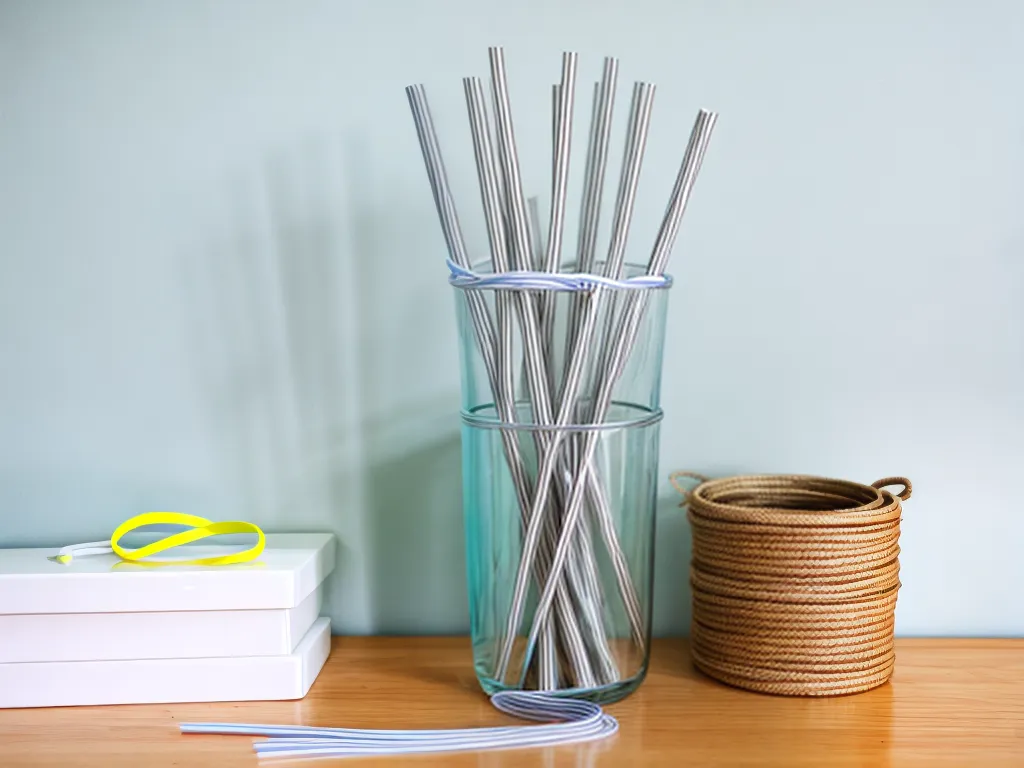
Introduction
Wiring your home with straws and tape may sound silly, but it's actually a fun DIY project that can teach you a lot about electrical circuits and conductivity. With just some basic materials, you can set up a simple circuit to power small devices like LED lights.
In this comprehensive guide, I'll walk you through step-by-step instructions on how to wire your home using straws and tape. We'll cover:
What You'll Need
- Materials
- Tools
- Safety Tips
Setting Up the Circuit
- Connecting the Power Source
- Building Parallel Circuits
- Incorporating Switches
Fun Projects to Try
- Lighting Up an LED
- Making a Doorbell
- Building a Light Switch
By the end, you'll have the knowledge and skills to wire up simple circuits with straws that can power fun electronics. The principles you learn doing this can provide a solid foundation for more advanced electrical projects down the line. So let's get started!
What You'll Need
Wiring your home with straws doesn't require many materials. Here's a quick look at what you'll need:
Materials
- Straws - Lots of them! Both bendable straws and hard plastic straws will work.
- Tape - Duct tape or electrical tape works best.
- Power source - A battery pack, USB power bank, or wall adapter.
- Wires - 22-gauge solid core wire is ideal.
- LED lights, buzzers, or other devices to power.
Tools
- Scissors - To cut the straws and tape.
- Wire strippers - For stripping wire ends.
- Needle-nose pliers - Helpful for bending wires.
Safety Tips
Working with electricity always requires some safety precautions:
- Adult supervision is recommended.
- Avoid power sources over 5 volts.
- Unplug battery packs when not in use.
- Take care not to create short circuits.
- ** Never put your body** in the path of electricity.
Okay, with the basics covered, let's start wiring!
Connecting the Power Source
The first step is to connect our power source to the straw circuit. Here's how:
-
Cut two 6 inch sections of wire using the wire strippers.
-
Strip 1/4 inch of insulation off both ends of each wire.
-
Twist the exposed metal on each wire end. This helps make good connections.
-
Attach one wire to the positive terminal on the battery pack. Tape it securely in place.
-
Attach the other wire to the negative terminal. Tape it too.
Now we have two live wires ready to connect to our straws!
Remember: The positive wire carries current to our circuits, while the negative wire returns current back from the circuit.
Building Parallel Circuits
Next, we need to build the actual electrical circuits from straws.
The basic approach is:
- Cut straw segments to desired lengths.
- Insert wires into each end of the straw to connect them.
- Tape connections securely.
By joining multiple straw segments with wires, we can build parallel circuits to power multiple devices.
Some tips:
- Use bendable straws for turns and angles.
- Hard plastic straws work best for straight wire runs.
- Make sure all connections are tight and taped.
- Overlap straws about 1/2 inch when joining them.
With practice, you'll get the hang of arranging straws to create a complete circuit.
Incorporating Switches
To control our straw circuits, we can incorporate switches:
- Use a paper clip as a simple touch switch.
- Insert a straw segment with a slider switch to open or close the circuit.
- Use a hinged clothespin as an on/off switch.
Position your switches anywhere along the straw wire path to control the flow of electricity.
You can also easily make a multi-position rotary switch using straws and a paper fastener. Just overlap straw ends and poke the fastener through to rotate.
Fun Projects to Try
Now let's put this knowledge to use by wiring up some fun electronics projects!
Lighting Up an LED
LEDs are simple to power using a straw circuit:
- Connect an LED's positive leg to the positive wire.
- Connect the negative leg to a straw along the circuit.
Attach a resistor like a section of pencil lead to limit current. Put a switch in series to turn it on and off!
Making a Doorbell
Wire a simple doorbell with straws:
- Make a closed circuit with a switch.
- Connect a buzzer or LED across the switch.
- Open the switch by attaching a paper clip across the door frame.
- When the door is opened, the paper clip detaches and the buzzer sounds!
Building a Light Switch
Make wires leading to a light or LED. Install a clothespin switch by the entrance to your room. Clip them to the straws to turn the light on. Unclip to turn it off!
Conclusion
While straw and tape circuits have their limitations, they provide a fun way to learn about the fundamentals of wiring and electricity. Start simple, be safe, and get creative.
The skills you pick up making straw circuits can be applied to more advanced electrical projects. With some diligent practice, you'll be wiring like a pro in no time!
So grab some straws and tape and start building. Who knows, you might just wire up something genius! Just make sure to turn the power off and unplug everything when you're done.